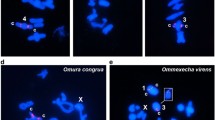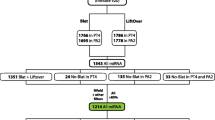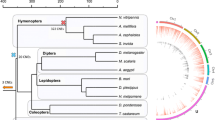Abstract
To date, the small nuclear 4.5SI RNA has only been studied in the rat (Rattus norvegicus). Combining PCR and hybridization analyses, we have revealed 4.5SI RNA homologues sequences in the genomes of four myomorph rodent families (Muridae, Cricetidae, Spalicidae, and Rhizomyidae), and not in other myomorph families (Dipodidae, Zapodidae, Geomyidae, and Heteromyidae) or sciuromorph and caviomorph rodents. By Northern-hybridization, 4.5SI RNA has been detected in the common rat (R. norvegicus, Muridae), golden hamster (Mesocricetus auratus, Cricetidae), and Russian mole rat (Spalax microphthalmus, Spalacidae), but not in the related great jerboa (Allactaga jaculus, Dipodidae) or in four non-myomorph rodent species tested. cDNA derived from 4.5SI RNA of M. auratus and S. microphthalmus has been cloned and sequenced. The hamster RNA is found to differ from rat 4.5SI RNA by only one nucleotide substitution. For the mole rat, two variants of 4.5SI RNA are detected: short (S) and long (L) with length 101 and 108 nt, respectively. The L variant differs from the S variant as well as from murid and cricetid 4.5SI RNAs by both a 7 nt insertion and a varying number of nucleotide substitutions. The sequence similarity between the spalacid S-variant and murid/crecitid variants of 4.5SI RNA is 90%. Judging from species distribution, 4.5SI RNA genes emerged during the same period of time as the related short interspersed element B2 arose. This occurred after the divergence of Dipodidae lineage but before the branching of Spalicidae/Rhizomyidae lineage from a common myomorph rodent stem. S variant genes seemed to emerge in a common ancestor of spalacids and rhizomyds whereas L variant genes formed in spalacids following the divergence of these two families. The low rate of evolutionary changes of 4.5SI RNA, at least, in murids and cricetids (6 × 10−4 substitutions per site per million years), suggests that this RNA is under selection constraint and have a function. This is a remarkable fact if the recent origin and narrow species distribution range of 4.5SI RNA genes is taken into account. Genes with narrow species distribution are proposed to be referred to as stenogenes.
Similar content being viewed by others
Author information
Authors and Affiliations
Additional information
Received: 11 December 2000 / Accepted: 27 August 2001
Rights and permissions
About this article
Cite this article
Gogolevskaya, I., Kramerov, D. Evolutionary History of 4.5SI RNA and Indication That It Is Functional. J Mol Evol 54, 354–364 (2002). https://doi.org/10.1007/s00239-001-0050-9
Published:
Issue Date:
DOI: https://doi.org/10.1007/s00239-001-0050-9




